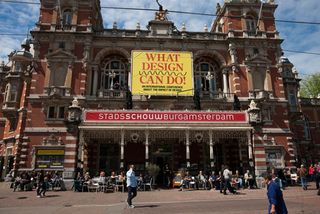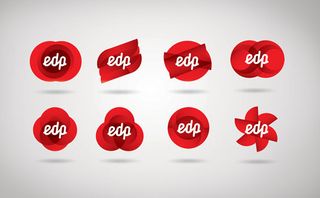8 reasons design studios should stay small
Michael Johnson and Stefan Sagmeister reveal why small is best at What Design Can Do 2015.
This time last week, Amsterdam was playing host to a diverse and inspiring range of creative perspectives at the fifth annual What Design Can Do conference – a place where leading minds in graphics, tech, architecture, food and even the science of smell came together to debate how design in all its forms can tackle the pressing issues of our time.

For design and branding aficionados, two global heavyweights were front and centre on the bill: johnson banks head honcho and triple Brand Impact Award-winner Michael Johnson kicked off day one, while Stefan Sagmeister brought things to a close with his trademark blend of flamboyance and humour.
- Have you entered your best branding to the 2015 Brand Impact Awards? Enter here now!
Johnson and Sagmeister may have very different outlooks and approaches to design, but they share at least one thing in common: both preside over small studios (less than 10 people) that punch considerably above their weight.
We chatted to both of them at the conference to get to the heart of why size really does matter, and discovered eight reasons why design studios should stay small...
01. People take more personal responsibility for the work
One point on which Sagmeister and Johnson agree is that in a small studio, everyone involved has a more personal stake in the work – and that can only be a good thing.
"As a company grows, it's unclear who's actually responsible, and how much love and attention they'll put into it," observes Sagmeister. "In a small company it's much easier for an individual to 'own' a project, and take pride and meaning in it."
"Your arse is on the line. There's nowhere to hide," agrees Johnson. "You could maybe get away with a couple of duff projects a year – there inevitably are some - but you're emotionally invested in it because your name's on the door."
02. Smaller creative units function more effectively – fact
Sagmeister draws attention to Pentagram as a prime example of a big agency with a small studio mentality. "It's the reason it has managed to stay relevant for so long," he argues.
"It's 20 small design companies that pretend to be one large design company. As a client, if you give a job to Pentagram you're actually giving it to an 8-10 person design company."
Many of Sagmeister & Walsh's clients are small, creative companies – perhaps the biggest in recent years being EDP, the electricity provider for Portugal and Spain.

"Things were running tight, we were full, there was a lot of work doing all the dozens and dozens of iterations, but I always find that a small dedicated group of individuals do a much better job than a larger group of a little bit less dedicated group of individuals," he insists.
03. Clients know who they're dealing with at every stage
Sometimes, Johnson admits, the idea of working with a very small studio will scare a client. johnson banks still loses perhaps one pitch a year for this reason. But things are changing.
"We nearly always say, even if you are going to work with a bigger agency you'll get a pyramid of people pretty much the size of johnson banks," he points out.
"Some clients are really swayed by size, but less so nowadays – what they like is the idea that they can have interaction with the key people: me, the account director, the senior designers. There's no pitch team."
04. Fewer staff is cheaper, but it can also be more efficient
"We had a couple of clients recently who due to their situation had extremely healthy finances," recalls Sagmeister. "They became inflated with people, and had three times more than they needed to run things."
"The problem is not that they paid so many people. The problem is that they were half as effective," he smiles. "I'm confident that half the staff would have been twice as effective, because people take more responsibility."
Next page: four more reasons why design studios should stay small

Thank you for reading 5 articles this month* Join now for unlimited access
Enjoy your first month for just £1 / $1 / €1
*Read 5 free articles per month without a subscription

Join now for unlimited access
Try first month for just £1 / $1 / €1
Get the Creative Bloq Newsletter
Daily design news, reviews, how-tos and more, as picked by the editors.

Nick has worked with world-class agencies including Wolff Olins, Taxi Studio and Vault49 on brand storytelling, tone of voice and verbal strategy for global brands such as Virgin, TikTok, and Bite Back 2030. Nick launched the Brand Impact Awards in 2013 while editor of Computer Arts, and remains chair of judges. He's written for Creative Bloq on design and branding matters since the site's launch.